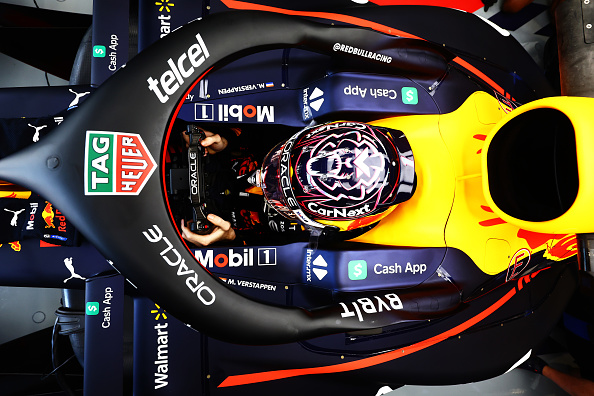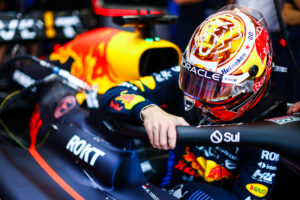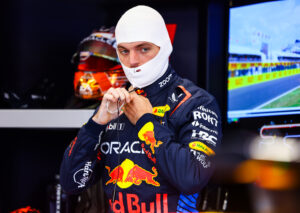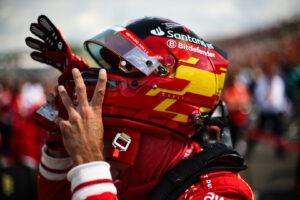Once hated, now praised. What is the Halo Safety Device that everyone was against and how does it save lives?
The Halo is a wishbone-shaped titanium structure placed atop the cockpit of an F1 car. It prevents large objects and debris from entering the cockpit, potentially saving drivers from serious and fatal injuries. The device is designed to sustain the weight of a London double-decker bus – the equivalent of 12 tonnes balancing on a 7kg carbon fiber-covered frame.
Who invented it?
The Halo concept was first proposed by the Mercedes team, but it wasn’t the only idea brought to the table. Red Bull Advanced Technologies proposed a transparent “aeroscreen,” which Daniel Ricciardo tested at the 2016 Russian Grand Prix. While Ferrari designed a “shield” tested by Sebastian Vettel at the 2017 British Grand Prix, but he couldn’t complete the trial because the shield made him feel dizzy. The FIA then decided to implement the Halo concept and began testing it during the 2016 and 2017 seasons.
Mercedes’ technical chief James Allison said:
“This is the first-generation head protection that goes up, over and around the driver’s head. But it won’t be the last. Nothing in F1 stands still for long. We will all be taking this first go and trying to improve it, trying to make sure the safety gets better but also the aesthetics.”
“It’s a bit of an acquired taste and we’re still acquiring it and everyone else too – but I’m sure there are things we can do in coming seasons to make it also look nicer. The imperative to look after the driver safety and our desire to give us cars that are going to set the pulse racing aesthetically will see us continue to develop this concept in the seasons to come.”
When and why was it introduced?
The Halo device was designed to save drivers from serious injuries or worse. It became mandatory in 2018, with the Australian Grand Prix being the first race in F1 history to use cockpit head protection.
Safety has been taken more seriously since Jules Bianchi’s fatal accident at the 2014 Japanese Grand Prix. Since then new safety measures like the Halo and the Virtual Safety Car have been introduced to the sport. However, it is believed that the Halo wouldn’t have saved Bianchi. Rather, the VSC was more likely to make a difference by forcing drivers to slow down in an accident zone, which could have helped the French driver who collided with a tractor vehicle that was recovering Sauber’s Adrian Sutil who crashed on the previous lap. RIP, Jules.
Did the Halo actually save a life?
Whether you like it or not, the Halo has proven to be a necessary part of an F1 car after saving numerous lives in F1, F2, and F3.
Romain Grosjean – 2020 Bahrain Grand Prix
One of the most violent accidents in the history of the sport was Romain Grosjean’s crash at the Bahrain Grand Prix in 2020. The front of his Haas car crashed through the three-tier steel barriers after the French driver experienced a 53G impact. Thankfully, his head was protected by the halo, and he only suffered second-degree burns to his hands the eruption split his car in two.
After the accident, Jules Bianchi’s mother sent a heartfelt message to the French journalist and commentator Julien Febreau, saying: “They introduced the Halo following my son’s accident and the Halo saved Romain’s life today. This is great. I’m glad that he’s okay.”
Grosjean in a video from his hospital bed: “I wasn’t for the Halo some years ago, but I think it’s the greatest thing that we brought to Formula 1 and without it, I wouldn’t be able to speak to you today.”
The best video we've seen today?
THIS 🙂 👊#BahrainGP 🇧🇭 #F1 @RGrosjean pic.twitter.com/TbGblznMBv
— Formula 1 (@F1) November 29, 2020
Lewis Hamilton – 2021 Italian Grand Prix
Another example is the collision between Lewis Hamilton and Max Verstappen at the 2021 Italian Grand Prix which saw Verstappen’s Red Bull right rear tire bouncing over Hamilton‘s head. The halo prevented the entirety of the car’s weight from being placed down onto his cockpit.
“Honestly, I feel very fortunate today,” said Hamilton. “Thank God for the halo, that ultimately, I think, saved me, and saved my neck… I don’t think I’ve ever been hit on the head by a car before and it’s quite a shock for me, because I don’t know if you’ve seen the image but my head really is quite far forward. And I’ve been racing a long, long time, so I’m so, so grateful that I’m still here.”
“The halo definitely saved Lewis’ life today,” added Mercedes team principal Toto Wolff. “Without it, it would have been a horrible accident which I don’t even want to think about.
“The championship was good fun up until now but we saw the halo save Lewis’ life today. We don’t want to see someone seriously hurt.”
It's days like today, I am reminded of how lucky I am. It takes a millisecond to go from racing to a very scary situation. Today someone must have been looking down, watching over me! #TeamLH: I'm so thankful for each and everyone of you, you are truly the best. Still we rise! pic.twitter.com/H2sGtXPKrr
— Lewis Hamilton (@LewisHamilton) September 12, 2021
Zhou Guanyu – 2022 British Grand Prix
The most recent accident in which the Halo likely saved another driver’s life occurred this year at Silverstone. Zhou Guanyu credited the device with saving his life after suffering a horrible crash when his Alfa Romeo flipped and smashed into a grandstand barrier during the opening lap. Fortunately, the Chinese driver survived and wasn’t seriously injured.
Mercedes’ George Russell called the crash “an incredibly scary incident” and added “it was horrible” for the fans close by.
https://twitter.com/bakerjordan1999/status/1543647934272643072?s=20&t=M3p4Oxv88fKnQYWd1RA2Gw
What did F1 drivers and teams think of the Halo?
When it was first introduced, almost everyone opposed the halo including drivers, teams, and fans. They criticized its “ugly” appearance and claimed it would limit visibility.
Max Verstappen was one of the drivers opposed to the halo’s introduction, saying that it is not only “ugly”, but also unnecessary. “There needs to be a certain element of risk. You can improve the car, but we don’t need this thing on top of it. It’s not just the looks, I don’t think it is necessary.”
Lewis Hamilton also referred to it as the “worst-looking modification” in the sport’s history. While Toto Wolff said he would take a chainsaw to the Halo if he could.
However, after Hamilton’s incident, Wolff admitted in an episode of the fourth season of Netflix’s Drive to Survive series that he is glad he lost the fight over the halo, saying there were tire marks on Hamilton’s helmet.
“That was me, you know, four years ago, I was fighting the Halo,” Wolff said. “Thank God I didn’t win that fight.”
Now that the Halo has proven it can save lives and prevent serious injuries, everyone recognizes the importance of the device, calling it one of the best innovations in F1 safety.






